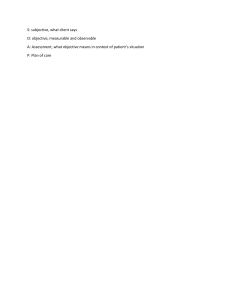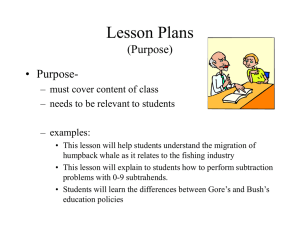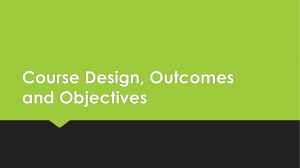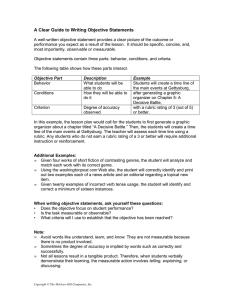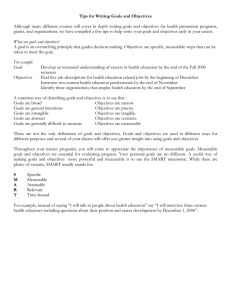Attachment H
advertisement
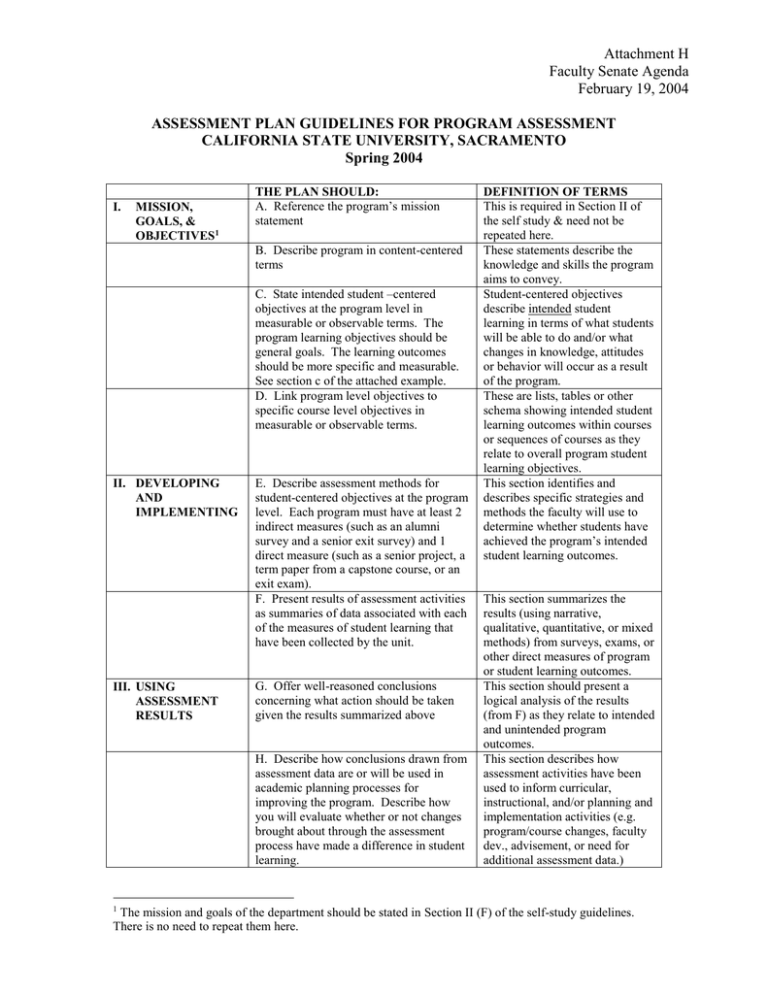
Attachment H Faculty Senate Agenda February 19, 2004 ASSESSMENT PLAN GUIDELINES FOR PROGRAM ASSESSMENT CALIFORNIA STATE UNIVERSITY, SACRAMENTO Spring 2004 I. MISSION, GOALS, & OBJECTIVES1 THE PLAN SHOULD: A. Reference the program’s mission statement B. Describe program in content-centered terms C. State intended student –centered objectives at the program level in measurable or observable terms. The program learning objectives should be general goals. The learning outcomes should be more specific and measurable. See section c of the attached example. D. Link program level objectives to specific course level objectives in measurable or observable terms. II. DEVELOPING AND IMPLEMENTING III. USING ASSESSMENT RESULTS E. Describe assessment methods for student-centered objectives at the program level. Each program must have at least 2 indirect measures (such as an alumni survey and a senior exit survey) and 1 direct measure (such as a senior project, a term paper from a capstone course, or an exit exam). F. Present results of assessment activities as summaries of data associated with each of the measures of student learning that have been collected by the unit. G. Offer well-reasoned conclusions concerning what action should be taken given the results summarized above H. Describe how conclusions drawn from assessment data are or will be used in academic planning processes for improving the program. Describe how you will evaluate whether or not changes brought about through the assessment process have made a difference in student learning. 1 DEFINITION OF TERMS This is required in Section II of the self study & need not be repeated here. These statements describe the knowledge and skills the program aims to convey. Student-centered objectives describe intended student learning in terms of what students will be able to do and/or what changes in knowledge, attitudes or behavior will occur as a result of the program. These are lists, tables or other schema showing intended student learning outcomes within courses or sequences of courses as they relate to overall program student learning objectives. This section identifies and describes specific strategies and methods the faculty will use to determine whether students have achieved the program’s intended student learning outcomes. This section summarizes the results (using narrative, qualitative, quantitative, or mixed methods) from surveys, exams, or other direct measures of program or student learning outcomes. This section should present a logical analysis of the results (from F) as they relate to intended and unintended program outcomes. This section describes how assessment activities have been used to inform curricular, instructional, and/or planning and implementation activities (e.g. program/course changes, faculty dev., advisement, or need for additional assessment data.) The mission and goals of the department should be stated in Section II (F) of the self-study guidelines. There is no need to repeat them here.
